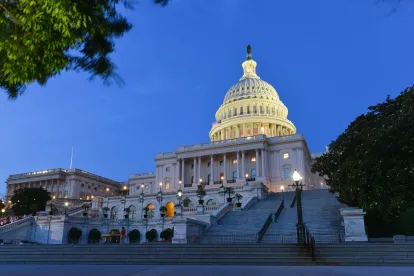Continued efforts to boost COVID-19 relief funding, as well as the Biden administration’s ambitious policy agenda, have sparked a wave of changes impacting the health care landscape. This GT Alert contains notable updates, including unprecedented funding opportunities and health care budget proposals.
American Families Plan
On April 28, 2021, President Biden unveiled the details of the “American Families Plan,” the much-anticipated second phase of the administration’s larger federal infrastructure package. The plan calls for $1 trillion in new spending and $800 billion in new tax credits. Leading up to the release of the plan, there was ongoing speculation over whether health care proposals would be included in the package, and if so, to what extent. Some Democrats pushed the president in recent weeks to include sweeping health care policy changes in the plan, including addressing drug pricing and reducing the Medicare eligibility age. However, the current version of the plan does not include drug pricing or Medicare updates, and instead, only addresses health care reform by permanently implementing the temporary Affordable Care Act subsidy expansions that were included in the “American Rescue Plan,” the COVID-19 relief package released on March 11, 2021 (discussed further below).
American Rescue Plan Act of 2021
On March 11, 2021, President Biden signed the American Rescue Plan Act of 2021 (ARPA or the Act), a $1.9 trillion COVID-19 relief package tailored to bolster support for hospitals, health systems, rural health care providers, state and local governments, and individuals impacted by COVID-19 nationwide. The Act creates substantial funding streams, and qualifying entities should consider pursuing these opportunities as soon as possible while anticipating continued, and sometimes new, regulatory enforcement scrutiny and oversight. The key categories follow below.
Financial Support for Health Care Providers
A significant amount of funding under the Act is apportioned to health care providers impacted during COVID-19, due to the influx of COVID-19 patients requiring treatment, increased demands for personal protective equipment and other supplies, and revenue loss due to a moratorium on elective procedures. While the Coronavirus Aid, Relief and Economic Security (CARES) Act, which passed in March 2020, included financial support for providers that lost revenue or incurred increased expenditures due to COVID-19 (i.e., the Provider Relief Fund (PRF)), the ARPA goes further, adding even more direct financial support for providers beyond of the funds available under the PRF.
Notably, the ARPA creates an $8.5 billion funding pool for rural Medicare and Medicaid providers to help address the specific challenges these providers face in addressing COVID-19 and serving often vulnerable populations. Similar to the requirements under the PRF, these additional funds are available to reimburse both healthcare-related expenses and lost revenues attributable to COVID-19. The ARPA directs U.S. Department of Health and Human Services (HHS) to create an application process for the funding, and applications must include a statement justifying the provider’s need for the payment, the provider’s tax identification number, and assurances that the provider will maintain and make available reports to ensure compliance with any HHS-imposed requirements. However, HHS has yet to finalize the application process.
In addition to the $8.5 million for rural providers, the ARPA allocates $500 million in grants for eligible rural entities through the U.S. Department of Agriculture, including public municipalities and counties, to cover COVID-19-related expenses. Qualifying expenses include increasing telehealth capabilities, vaccine administration costs, and purchasing needed medical supplies.
The ARPA also notably includes additional funding for mental health and substance abuse treatment, an area of particular concern during the COVID-19 pandemic. The Act includes approximately $4 billion in funding to address behavioral health and substance abuse disorder issues, including funding through grants or contracts for health professional schools, academic health centers, state or local governments, Indian tribes and tribal organizations, and other public or private nonprofit entities to support behavioral health treatment, as well as the behavioral health workforce issues.
Additional Funding for Vaccines and Testing Capacity
The ARPA also allocates a significant amount of money to increase vaccine and testing capacity, including $7.66 billion for state, local, and territorial health departments to increase the public health workforce and procure necessary equipment and other supplies to support testing and vaccinations. Even more, the Act also includes $10 billion for carrying out activities under the Defense Production Act to bolster the United States’ vaccine supply, including expanding domestic manufacturing of vaccines and personal protective equipment.
Expanded Health Care Access
The Act also focuses on health care coverage expansion to ensure vulnerable individuals have access to COVID-19 vaccines and treatment, as well as ongoing health care coverage. Provisions aimed at expanding coverage include:
- Mandatory Medicaid coverage of COVID-19 vaccines and treatment without enrollee cost-sharing.
- Elimination of the Medicaid drug rebate cap, and inclusion of outpatient drugs used for COVID-19 prevention or treatment to be included in Medicaid Drug Rebate Program.
- Expansion of health care coverage for individuals, including two-year expansion of subsidies in the exchanges above 400% of the Federal Poverty Level (FPL), with contribution toward premium capped at 8.5% and federal government to subsidize 100% of COBRA insurance premiums for employees who lose their jobs due to the pandemic, and for their covered relatives.
- Option for states to extend Medicaid and CHIP eligibility to pregnant individuals for 12 months postpartum.
Fiscal Year 2022 Discretionary Budget Preview
In addition to the funds allocated under the ARPA, on April 9, President Biden released the fiscal year 2022 discretionary budget preview that expanded on priorities included in the ARPA, as well as the proposed American Jobs Plan. The proposal includes additional funding for home and community-based services (HCBS), rural health, and behavioral health and substance abuse treatment, among other priorities.
Key components of the proposal include:
- $551 million for HCBS, which would be additional to the $400 billion already included in the administration’s infrastructure plan proposal.
- $6.5 billion to launch the Advanced Research Projects Agency for Health, which would provide increases in direct federal research and development spending in health. The focus would include cancer and other diseases, such as diabetes and Alzheimer’s.
- $10.7 billion to address the opioid crisis, including investments in medication-assisted treatment, research, and behavioral health workforce development. This funding would be targeted to support communities with specific needs, including Native Americans, older Americans, and rural populations.
- More than $200 million to reduce maternal mortality and morbidity nationwide, including bolstering Maternal Mortality Review Committees, expanding the Rural Maternity and Obstetrics Management Strategies program, implementing implicit bias training for health care providers, and creating state pregnancy medical home programs.
The changes summarized in this GT Alert present meaningful opportunities within the health care arena. Experienced counsel can help qualifying entities identify and navigate the new avenues available to them.




 />i
/>i
